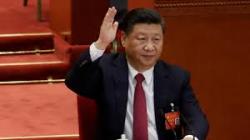By Andy Ford
The Economist magazine, which (in its head at least) is the voice of rational Anglo-American capitalism, has published its perspective on China’s ‘Belt and Road Initiative’ (BRI). As it represents the thoughts of the more far sighted capitalists it is at least worth a look.
The Belt and Road Initiative is a group of initiatives across Eurasia, Africa and even Latin America involving the construction of ports, railways and infrastructure to an estimated value of $1 trillion. The title refers to a ‘belt’ of Eurasian countries linked by a belt of transport links along the historical Silk Road, while the ‘road’ refers to maritime roads and trade routes across the Indian and Pacific oceans. Over 70 countries have partnered with China under the initiative. No wonder the western capitalists are concerned.
Projects include trans-Eurasian railways, ports in Pakistan, Sri Lanka and Djibouti, factories in Tajikistan, and wind-turbines in sub-Saharan Africa. It may be the biggest infrastructure investment in history.
The Economist article is a master class in hypocrisy. Their first objection is that the Chinese initiative ignores human rights concerns. Unlike the American-backed initiatives which not only ignore human rights abuses but has actively organised them – from Indonesia in 1965 to Venezuela in 2018. And the Economist has had barely a word to say.
Their second objection is that the terms on which the railways, ports and infrastructure are built are ‘not transparent’ and prone to corruption. So, exactly like most capitalist trade and arms deals, then.
Thirdly, the contracts go to Chinese companies using mainly Chinese labour. Although capitalist aid does not involve exported labour, the contracts are nearly always given to the ‘aid givers’ companies and the projects, of course, are intended to benefit the donor country’s firms.
The Economist is also touchingly concerned about the plight of those countries who accept the loans – as they may end up over-indebted. Ask the population of any IMF-indebted country what they think of that problem!
And finally, they worry that China is bidding for ‘leadership’ in Asia. As the fastest growing country in the region, is that so surprising?
Their objection in short, is that China is behaving just like the USA and other capitalist powers have done in the past.
But the Economist’s remedies are surprisingly mild – to “keep a sense of perspective” as money does not necessarily equal control, to join with China’s BRI by co-funding loans and infrastructure, and for the US to stay in Asia to compete with China rather than to withdraw. They are reluctantly compelled to accept that China as an economic superpower is here to stay and the BRI cannot be wished out of existence, blocked or destroyed by military means.
The huge investments of the BRI are part of China’s overall massive investment rate. The country is investing 16% of GDP annually in science, technology, manufacturing and infrastructure. At least part of the reason for the BRI is to avoid over-investment and over-accumulation in China itself. But the Chinese Stalinists long ago coined the saying “use money to make politics” in relation to their influence in Hong Kong and Macao. The BRI in some ways is the same strategy on a continental scale. In that sense the Economist is right to worry about the extension of Chinese influence across Asia spread by cheap goods and easy-terms loans. But the financial fire power which underlies the BRI is only possible because China has emerged from a planned economy and retains state control of the key areas of its economy. Despite the creation of a large and growing capitalist sector of the Chinese economy the state remains as a Stalinist or maybe neo-Stalinist state with control of the key levers of economic power. And the military power of the country with its economic under-pinning means that for now the capitalist class cannot simply organise a coup or threaten invasion to maintain their supremacy.
August 1, 2018



